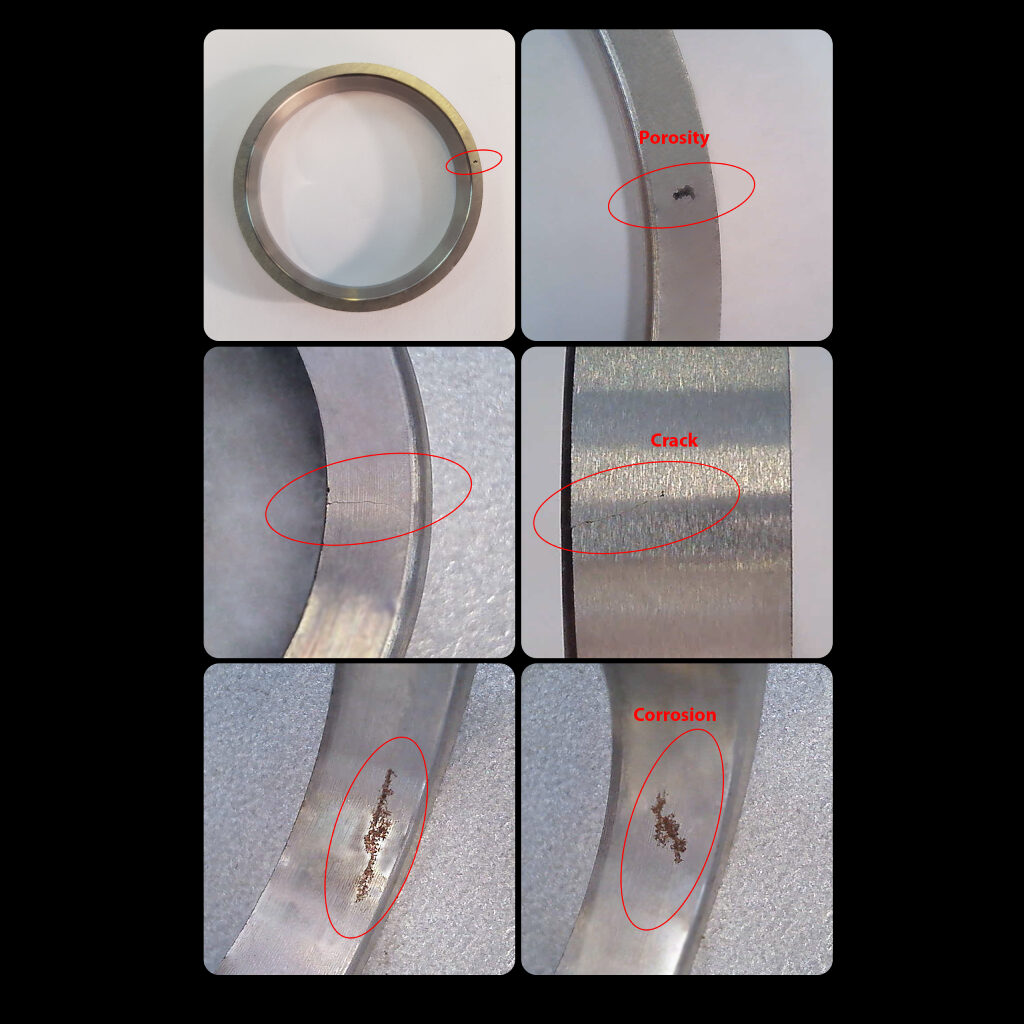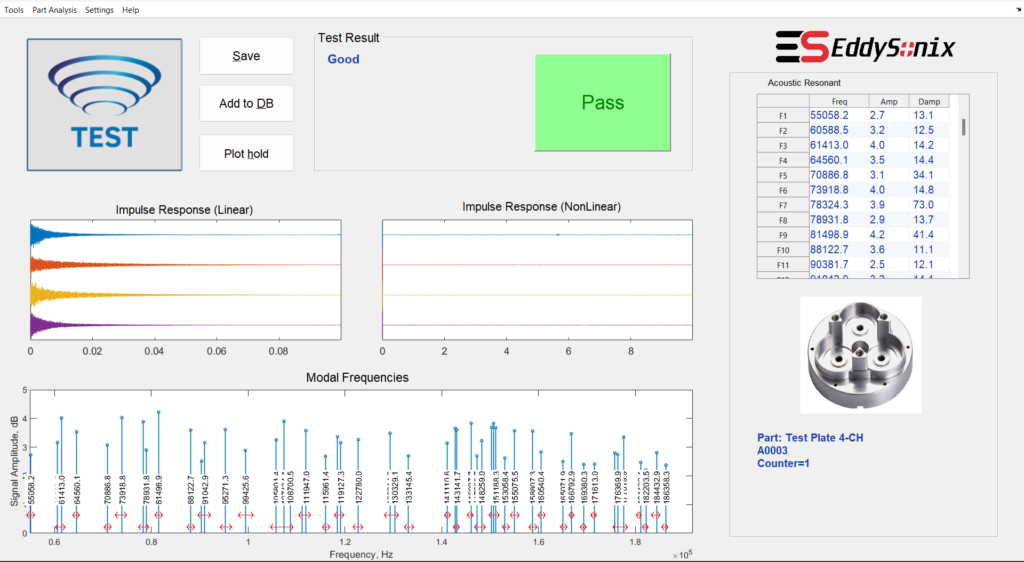EddySonix® SRT Machines
“Sweep Resonance Testing” is the improved method of our former “Impact Resonance Testing” that we introduced in 2007. This technique has the ability to detect very small voids of about 0.2 mm, and small cracks that may not be detected by visual inspection. We have successfully implemented this method in the aerospace and automotive industries to test different types of components with complex shapes, small sizes, and advanced alloys. The test is fast and automatable to inspect 100% of mass-produced parts and can detect any surface and internal defects.
How EddySonix® SRT Works?
A piezo actuator excites the part with a wideband spectrum pattern, and simultaneously records the parts’ responses with multi-channel sensors. The scan takes 10 seconds. The technique accurately identifies the part’s transfer function, and then extracts its natural frequencies and damping factors. In order to detect tiny flaws anywhere in the volume, a large number of modes are labelled and tracked.
Depending on the complexity of the part, sometimes we need to check 500 natural frequencies up to 1 MHz. Mode fitting and labeling is so precise that it can identify closely spaced, or overlapping and hidden modes in frequency regions where multiple modes are clustered together.
Next, we check the association between the modes. In a good part, the modes are in coordination, but a defect such as a crack or a cavity makes lose this harmony. In this way, the system sorts out the defective parts and signals the severity of the defect.
EddySonix® Piezo Actuator
At EddySonix®, we design and manufacture specialized piezo actuators in-house for “Sweep Resonance Testing” devices. The preloaded piezo actuators are protected by a stainless-steel enclosure and are optimized for resonance testing that generates broadband linear vibrations from DC to 1MHz. Additionally, we provide the linear power amplifier for driving the high capacitance piezo actuators.
Sweep Resonance Testing is a technique for detecting defects such as cracks and voids in components. The piezo actuator excites the part with a broadband spectrum pattern and simultaneously records the parts’ responses with multi-channel sensors. The scan takes 10 seconds. The technique accurately identifies the part’s transfer function, and then extracts its modal frequencies and damping factors. In a good part, the modes are in coordination, but a defect such as a crack or a porosity makes lose this harmony. In this way, the system sorts out the defective parts and signals the severity of the defect.
The technique is ideal for 100% inspection of Powder Metallurgy (PM), Metal Injection Molding (MIM), Additive Manufacturing (AM), Castings, and Forging parts.
Success Story Automatic Sorting Valve Seat
EddySonix® has designed and developed an automatic test bench and sorting based on “Sweep Resonance Testing” for Valve Seats. This technique has the ability to detect very small voids and cracks in valve seats produced by powder metallurgy (PM). The test is fast and can detect any surface and internal defects.
In order to detect tiny flaws anywhere in the volume, a large number of natural frequencies and damping factors are labelled and tracked up to 600 kHz. Next, we check the association between the modal frequencies. In a good part, the modes are in coordination, but a defect such as a crack or a porosity makes lose this harmony. In this way, the system sorts out the defective parts and signals the severity of the defect.


